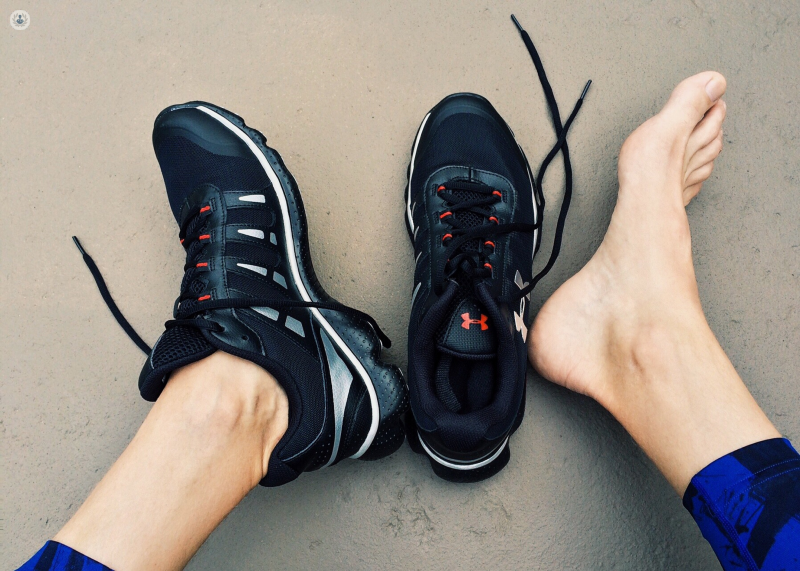Why might an ankle arthroscopy be performed?
Autore:In this article below, highly esteemed consultant orthopaedic surgeon, Mr John McKinley, explains why an ankle arthroscopy is generally performed, and outlines the associated potential risks.

What is an arthroscopy?
An arthroscopy is a technique where a joint can be examined using a camera which is passed through a small incision. On the ankle, it is used to examine the ankle joint but also to perform procedures using small instruments passed through another keyhole incision. The procedure is generally performed using a short general anaesthetic in theatre.
Why might an ankle arthroscopy be performed?
There are several reasons for doing an ankle arthroscopy, but generally an MRI scan will already have been performed so the surgeon will know what to expect.
In most cases, the operation is performed to remove something that is ‘impinging’ or causing pain – this can be soft tissue or bone. This can be to treat early arthritis, for removal of bone spurs or sometimes, simply to remove a loose piece of bone. This can be done to remove impinging tissues from the front or the back of the ankle.
In other cases, the procedure is performed to treat damaged cartilage (the joint surface). In this operation, loose or damaged cartilage is removed and the defect treated with a technique called microfracture to stimulate healing. The ankle can also be fused arthroscopically in cases of severe arthritis.
What are the benefits of an ankle arthroscopy?
The main benefit of performing a procedure arthroscopically is a quicker recovery. As the incision is small, there is less damage to the soft tissues and therefore, generally less swelling and stiffness is experienced by the patient. There is also a lower infection risk.
What are the associated risks?
All operations have risks. There is risk of infection with any operation, but this is lower in arthroscopic procedures. Tendons and nerves can be damaged, leading to numbness or weakness. There is a risk with any surgical procedure that it does not improve pain or leads to pain. There are anaesthetic risks and there is a small risk of a blood clot.
What is recovery like?
Recovery will depend on the actual operation that is performed. In a straightforward arthroscopy to remove impingement, you will have a bandage for a few days and may need crutches during this time. Skin usually takes about 10 days to heal, so during this period, you should keep walking to a minimum.
If you wish to make an appointment with Mr John McKinley today, just head over to his Top Doctors profile.


